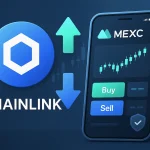The Impact of Blockchain on the Finance Industry is no longer a theoretical debate; it’s a measurable transformation touching payments, capital markets, compliance, and even the nature of money. From the tokenization of traditional assets to instant cross-border payments, blockchain’s core traits—programmability, transparency, and settlement finality—are reengineering financial plumbing that hasn’t fundamentally changed in decades.
In this deep dive, we’ll unpack how blockchain is reshaping banking and capital markets, what use cases are working at scale, the regulatory realities, and a practical roadmap for financial institutions and professionals who want to participate. You’ll find short-tail and long-tail topics woven throughout—blockchain in banking, tokenization of assets, stablecoins and CBDCs, DeFi vs TradFi, on-chain compliance, and zero-knowledge privacy—so you can explore where this technology fits your strategy.
Why blockchain matters for finance
Before zooming into use cases, let’s map the core capabilities that explain the impact:
- Programmability: Smart contracts automate workflows (e.g., coupon payments, margin calls) with code. That shifts finance from static ledgers to stateful, event-driven systems.
- Shared truth: A synchronized ledger reduces reconciliation between brokers, custodians, CCPs, and banks. Fewer breaks mean lower operational risk and faster close.
- Settlement finality: Near-instant settlement (T+0) changes liquidity, collateral, and counterparty risk profiles.
- Tokenization: Real-world assets—securities, money market funds, repo, real estate, carbon credits—become programmable tokens. Issuance, distribution, and lifecycle management get streamlined.
- Composability: Financial primitives (payment, escrow, swap, oracle) can be combined like Lego bricks across platforms, enabling new products.
- Global reach: Open networks interoperate across borders, reducing friction in cross-border payments and remittances.
These attributes align directly with industry pain points: high post-trade costs, slow settlement, opaque collateral chains, fragmented liquidity, and compliance overhead.
Where blockchain is already working
- Payments and remittances: Stablecoins (e.g., regulated fiat-backed tokens) settle in minutes and run 24/7. Major payment networks have piloted on-chain settlement rails, and enterprises already use stablecoins for treasury flows and supplier payments.
- Securities settlement: Pilot and production systems for tokenized securities and accelerated settlement are live in multiple jurisdictions. Post-trade reconciliation declines when participants share a canonical ledger.
- Tokenized funds and bonds: Asset managers have issued on-chain money market funds and tokenized bond experiments with automated couponing and transparent cap tables.
- Repo and collateral: DLT-based repo platforms demonstrate intraday liquidity, atomic delivery-versus-payment (DvP), and real-time collateral visibility.
- Trade finance and supply chain: Digitized bills of lading and on-chain financing reduce fraud and speed up working capital cycles.
- FX and on-chain swaps: Smart contracts can coordinate atomic cross-currency exchanges, reducing settlement risk.
The direction is clear: programmable, shared ledgers condense multi-day workflows into minutes or seconds, with audit trails that simplify compliance.
DeFi vs TradFi: Convergence, not competition
- Liquidity: DeFi automated market makers (AMMs) introduced continuous liquidity and 24/7 price discovery. TradFi can adopt similar models for niche markets or after-hours trading.
- Transparency: On-chain order books and proof-of-reserves enhance market integrity, a response to opacity in fragmented systems.
- Risk management: DeFi’s overcollateralized lending and on-chain liquidation teach lessons about real-time risk and circuit breakers.
- Governance: Token governance is experimental but inspiring new proxy and corporate action models.
The future looks hybrid: regulated access to on-chain liquidity, with institutions using permissioned rails that can bridge to public blockchains when policy and risk frameworks allow.
Stablecoins and CBDCs: The new cash leg
- Stablecoins: For corporate treasury and payments, fiat-backed stablecoins provide programmable cash with near-instant settlement. They can embed rules (whitelists, transfer restrictions) and integrate with invoicing, escrow, or marketplace workflows.
- CBDCs: Central bank digital currencies explore wholesale settlement and retail payment modernization. Wholesale CBDCs can streamline interbank settlement, cross-border corridors, and DvP against tokenized assets. Interoperability between CBDCs and existing RTGS systems is a core research area.
Stablecoins are already operational at scale; CBDCs are maturing via sandbox pilots and cross-border experiments. Both are integral to the cash leg of tokenized markets.
Compliance, AML/KYC, and on-chain identity
- Travel Rule and AML: Analytics tools monitor on-chain flows to detect suspicious activity, sanctions breaches, and typologies like peel chains.
- Programmable compliance: Smart contracts can enforce whitelist-only transfers, freeze functionality per court order, and jurisdictional restrictions.
- On-chain identity: Verifiable credentials and privacy-preserving proofs let institutions validate KYC attributes without exposing raw PII, reducing data liability and enabling reusable KYC across counterparties.
The net effect is a shift from after-the-fact reporting to real-time, embedded compliance.
Challenges that still matter
- Scalability and throughput: Public chains rely on rollups and data availability layers; permissioned chains tune consensus. The choice depends on latency, throughput, and openness requirements.
- Privacy: Zero-knowledge proofs and secure enclaves enable confidential transfers and audits, but integration and UX remain complex.
- Legal finality: Contracts must recognize on-chain settlement as final. Netting, novation, and bankruptcy remoteness need explicit legal frameworks.
- Interoperability: Cross-chain messaging and token standards (e.g., asset ID, metadata) must converge to avoid liquidity silos.
- Key management and custody: MPC custody, hardware security modules, and failover protocols mitigate key loss and operational risk.
- Oracle and data risk: Price feeds and reference data must be tamper-resistant; governance around oracle selection is part of the control stack.
Addressing these isn’t optional; they are central to production-grade financial infrastructure.
Architecture choices for banks and market infrastructures
- Public vs permissioned: Public chains maximize reach and composability; permissioned networks prioritize privacy and predictable governance. Many institutions adopt a dual approach.
- Layer-2 rollups: Validity or optimistic rollups offer high throughput with settlement on a public L1. App-specific rollups provide granular control and compliance features.
- Token standards: Use widely adopted standards for fungible (e.g., ERC-20 equivalents) and non-fungible/semi-fungible assets (e.g., ERC-721/1155 equivalents) with extensions for compliance (transfer restrictions, role-based controls).
- Smart contract patterns: Upgradability, pausability, access control, and emergency withdrawal logic are table stakes for regulated products.
- Observability: On-chain analytics, event subscriptions, and SIEM integration are necessary to monitor risk in real time.
Use cases with tangible ROI
- Cross-border treasury: Replace multi-day correspondent chains with near-instant stablecoin rails; reduce trapped cash and FX slippage.
- Primary issuance of bonds: Tokenized bonds with on-chain registries cut manual work, automate coupons, and streamline settlement.
- Post-trade netting and reconciliation: Shared ledgers reduce breaks and operational overhead in corporate actions and securities servicing.
- Repo and collateral mobility: Atomic DvP and intraday repo improve balance sheet usage and collateral optimization.
- Fund distribution: Tokenized funds provide fractional access, transparent cap tables, and automated transfer agent functions.
- Lending and securitization: On-chain registries of collateral and servicing data improve transparency for investors and regulators.
Practical roadmap for financial institutions
1) Define the target business outcome
– Reduce settlement time from T+2 to T+0 for a product line
– Cut reconciliation costs by 30% in post-trade operations
– Open new distribution channels via tokenized funds
2) Choose the right chain and custody
– Start with a permissioned or app-specific rollup if privacy and control are priorities
– Use institutional MPC custody; design disaster recovery and access policies
3) Build compliance in from day one
– Integrate KYB/KYC providers and policy engines
– Adopt analytics for sanctions screening and AML monitoring
– Encode transfer restrictions into token contracts
4) Pilot with contained scope
– Single asset class, limited counterparties, clear metrics
– Run parallel with legacy systems for a defined period
5) Measure and iterate
– KPIs: fail rates, settlement time, operational incidents, cost-to-serve, liquidity savings
– Stress test scenarios: market volatility, oracle outage, key compromise
6) Plan for interoperability
– Implement standardized messaging and bridging strategies
– Keep exit ramps to legacy rails for continuity
Skills for professionals entering blockchain finance
- Smart contract literacy: Understand how token contracts, access control, and oracles work.
- Risk and control: Translate regulatory requirements into on-chain policy and monitoring.
- Data and analytics: On-chain data is public but non-trivial; develop query and attribution skills.
- Product and UX: Tokenization succeeds when the user experience is simpler than legacy alternatives.
Getting hands-on: trade, learn, and build with a leading exchange
If you want a practical way to experience how tokenized assets, stablecoins, and on-chain markets behave, opening an account on a global exchange is a straightforward start. Trading spot and derivatives, trying staking or passive yield products, and testing on-chain transfers will build intuition fast.
Use this referral to get a head start:
- Sign up with Binance — 20% fee discount + up to $10,000 in benefits
- Referral code: CRYPTONEWER
What you can explore once you’re in:
– Stablecoin rails: Move funds on-chain to experience near-instant settlement and low fees.
– Portfolio tools: Test risk controls (stop-loss, take-profit), and assess market depth across pairs.
– Earn and liquidity: Explore conservative yield options, remembering to evaluate smart contract and counterparty risks.
– Education hubs: Learn the differences between custodial and non-custodial wallets, MPC security, and on-chain identity.
Always consider your risk tolerance and local regulations when using any exchange or DeFi protocol.
Frequently asked questions about the Impact of Blockchain on the Finance Industry
-
Is blockchain only useful for crypto trading?
No. Payments, post-trade, repo, and fund distribution are seeing real adoption. Crypto trading is just one surface area. -
Will blockchain remove intermediaries?
It changes what intermediaries do. Roles shift from record-keeping and reconciliation to governance, risk management, and service orchestration. -
Are public blockchains compliant enough for institutions?
They can be, with the right controls: whitelisting, KYC-linked wallets, and policy-aware tokens. Some use cases still fit permissioned networks better. -
Can blockchain handle market-scale throughput?
Yes, with rollups, data availability layers, and optimized consensus. Design choices depend on latency and privacy needs. -
What about privacy and sensitive data?
Use off-chain storage for PII and on-chain proofs (e.g., zero-knowledge) to validate compliance without exposing raw data. -
How do I experiment without large budgets?
Run contained pilots, leverage testnets or sandboxes, and use managed custody. Measure KPIs aggressively to demonstrate ROI. -
Where do CBDCs fit in?
CBDCs could modernize the cash leg in wholesale settlement and enable programmable money in retail use cases. Interoperability with existing RTGS rails is key. -
How do I start as an individual?
Open an account, learn stablecoins and on-chain transfers, study token standards, and practice wallet security. Try the referral link above for discounted fees and platform benefits.





